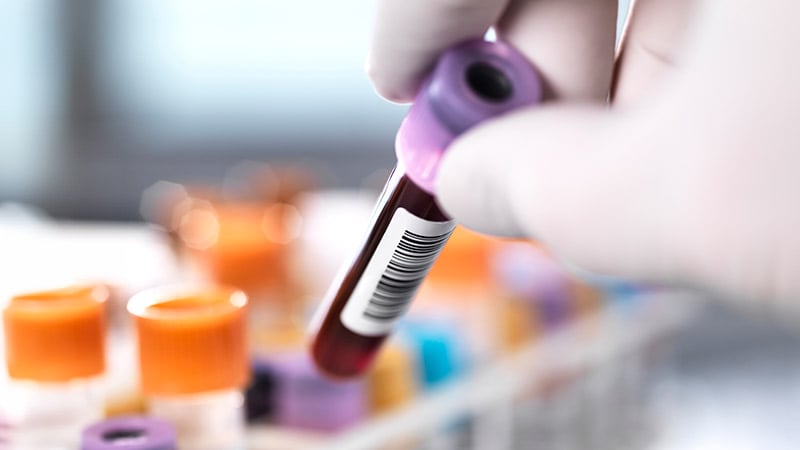Diagnosing Infection in Tocilizumab Users: Eosinopenia and EC/NC Ratio as Indicators
Core Concepts
Eosinopenia and low EC/NC ratio are indicators of infection in tocilizumab users.
Abstract
TOPLINE:
Eosinopenia and low EC/NC ratio indicate infection in tocilizumab users.
METHODOLOGY:
Data from 163 tocilizumab-treated patients with inflammatory diseases reviewed.
41 patients had unscheduled hospitalizations for suspected infections.
Median age of patients was 59 years, 83% were female.
TAKEAWAY:
49% of hospitalized patients had infectious diseases.
Common infections: pneumonia (30%), joint/bone infections (25%), GI tract infections (15%).
Lower EC in infected patients compared to non-infected.
Lower EC/NC ratio in infected patients.
IN PRACTICE:
Parameters like EC and EC/NC ratio can aid in infection screening.
SOURCE:
Lead author: Audrey Glatre, MD, University Hospital Centre Reims, France.
Published in RMD Open on February 9.
LIMITATIONS:
Retrospective, observational design.
Small study population.
Data from a single center.
DISCLOSURES:
Study had no external funding.
Researchers had no financial conflicts.
Diagnosing Infection in Tocilizumab Users: What's Helpful?
Stats
Eosinopenia and low EC/NC ratio are indicators of infection for tocilizumab users.
Infectious diseases diagnosed in 49% of hospitalized patients.
Common infections: pneumonia (30%), joint/bone infections (25%), GI tract infections (15%).
Median EC significantly lower in infected patients (0.06 g/L vs 0.20 g/L).
Median EC/NC ratio significantly lower in infected patients (6.54 vs 48.50).
Quotes
"This original study suggests that all those easily available parameters should be used to maximize [sensitivity] in the screening of infection in patients undergoing treatment with IL-6 pathway antagonists." - Researchers
Key Insights Distilled From
by Heidi Splete at www.medscape.com 02-23-2024
https://www.medscape.com/viewarticle/diagnosing-infection-tocilizumab-users-whats-helpful-2024a10003li
Deeper Inquiries
How can these findings impact the treatment protocols for tocilizumab users?
The findings of the study suggest that monitoring eosinopenia and the EC/NC ratio could be valuable in identifying infections in patients undergoing treatment with tocilizumab. By incorporating these parameters into routine screening practices, healthcare providers can potentially detect infections earlier, leading to prompt intervention and improved patient outcomes. This information can influence treatment protocols by emphasizing the importance of regular monitoring of these markers in tocilizumab users to enhance infection detection and management strategies.
What are the potential drawbacks of relying solely on eosinopenia and EC/NC ratio for infection diagnosis?
While eosinopenia and the EC/NC ratio can serve as useful indicators of infection in tocilizumab users, relying solely on these parameters for diagnosis may have limitations. These markers may not be specific to infections and can be influenced by other factors, potentially leading to false-positive or false-negative results. Additionally, these markers may not capture all types of infections or may not be sensitive enough to detect certain infections in some individuals. Therefore, using a comprehensive approach that considers multiple clinical and laboratory parameters alongside eosinopenia and the EC/NC ratio is essential to ensure accurate and timely diagnosis of infections in tocilizumab users.
How can advancements in infection diagnostics further improve patient outcomes in inflammatory disease treatments?
Advancements in infection diagnostics, such as the development of more sensitive and specific biomarkers, novel imaging techniques, and rapid molecular testing methods, can significantly enhance patient outcomes in inflammatory disease treatments. By utilizing these advanced diagnostic tools, healthcare providers can achieve earlier and more accurate detection of infections, leading to timely initiation of appropriate treatment strategies. Improved infection diagnostics can help differentiate infectious complications from disease flares or adverse drug reactions, enabling tailored and effective management approaches for patients with inflammatory diseases. Overall, integrating cutting-edge infection diagnostic technologies into clinical practice can optimize patient care, minimize complications, and enhance treatment outcomes in individuals receiving therapies like tocilizumab.
0
More on Healthcare
